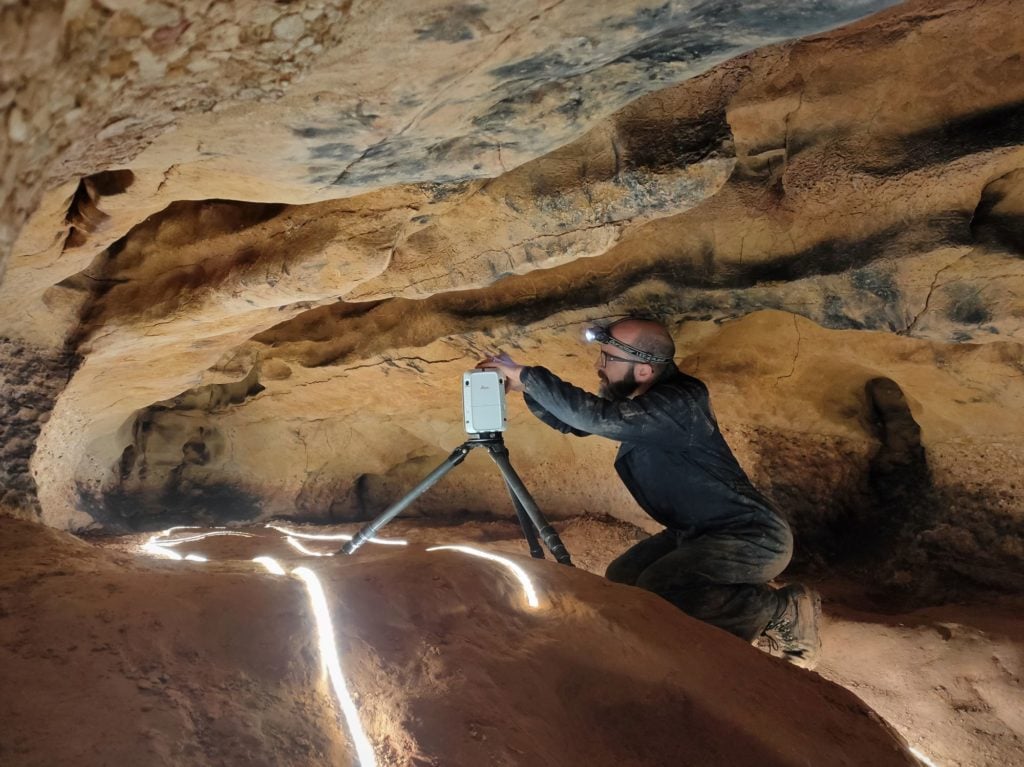Experts Discover a 'Shrine' of 15,000-Year-Old Animal Carvings and Mysterious Symbols in a Spanish C [View all]
The astounding carvings includes depictions of horses and bulls as well as mysterious abstract symbols.
Javier Pes, February 17, 2020

Archaeologist makes a 3D scan of the prehistoric cave art at Font Major. Photo courtesy of IPHES.
Experts have discovered a cave full of prehistoric carvings in northern Spain. Among the hundreds of rock carvings, some believed to be 15,000 years old, are vivid depictions of horses, deer, and bulls, as well as a wealth of mysterious and abstract symbols. Unlike the famous prehistoric paintings at Altamira, also in northern Spain, the recently discovered cave art in Catalonia is carved directly into the soft surface of the rock.
A team of archaeologists stumbled across the richly decorated cave at the end of October, although their discoveries have only just been announced. Josep Maria Vergès, who led the team from IPHES (the Catalan Institute of Human Palaeoecology and Social Evolution) described the find as “exceptional” in a statement, and compared the cave to a “shrine.”
The cave art is now being recorded and studied using 3D scanning technology. The engravings were created on a layer of soft sand deposited on the cave’s surface in an area that is difficult to access. The artworks are extremely fragile and can be damaged if touched; several figures seem to have been damaged in the past by visitors who were unaware of their existence. Experts are now studying the best way to preserve the remarkable finds.
Vergès tells Artnet News, that he felt a “mixture of surprise and disbelief, followed by great satisfaction,” when the he first saw the ancient works of art. “Surprise because the cave is not an ideal place to find engravings due to the characteristics of the rock, the walls were very irregular, and the specialists thought that it was not suitable for painting or engraving.” He says it seemed impossible that none of the thousands of people who have passed through the cave’s gallery in the past has ever spotted that “between and under the modern inscriptions there were tens of Paleolithic engravings.”
More:
https://news.artnet.com/art-world/prehistoric-cave-art-animals-1779519
